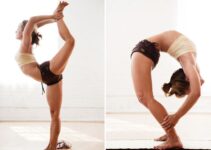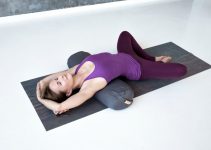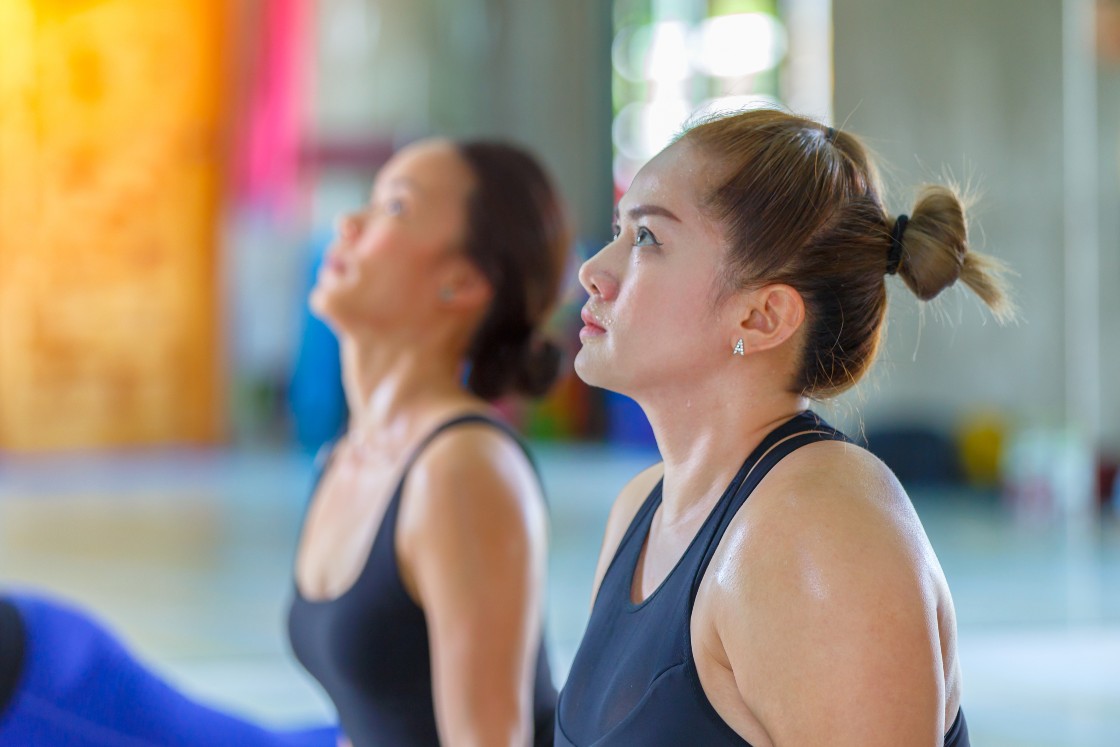
Among many styles of yoga derived during the 19th century in India, some most famous styles are Asthanga, Iyengar, Vinyasa & Bikram yoga.
Different approaches to see yoga made the founders behind these styles of yoga famous worldwide including India.
For example, In Iyengar’s point of view, the body’s alignment is the key element while practicing yoga asana. On the other hand, In Bikram yoga, a set of specific yoga postures at fixed sequence & room temperature is a key element to begin any yoga class.
Here in this article, you’ll know about the Bikram style of yoga, which is also used as a synonym of hot yoga (but not actually hot yoga). Then you will come to know if you as a beginner planning to join a hot Bikram yoga class, what things you need to take care of before & while. And finally, how hot Bikram yoga classes benefit one at the physical, mental & spiritual levels.
What is Bikram yoga?
Bikram yoga is a hot style of yoga which consists of a sequence of 26 unchanging yoga poses & breathing technique practiced at 105 °F (41 °C). If you’re familiar with simple yoga poses of Hatha yoga (mentioned in HYP), you would found Bikram yoga poses are just a modified version of traditional hatha yoga poses.
Inverted poses are not a part of 26 poses of Bikram yoga, as according to Bikram, a beginner can harm themselves by inverted yoga poses.
A Typical Bikram Yoga Class
Till date, there are over 1650 Bikram yoga studios worldwide but all the classes are practiced under the same set of environments. These are a few things that make Bikram yoga different from other styles of yoga.
- Class temperature is fixed at 105 °F (41 °C) with humidity of 40% so to improve one’s physical flexibility & mental relaxation. The founder himself called these classes Bikram’s Torture Chamber.
- A series of 26 yoga poses followed by a savasana & 2 breathing exercises (one at the beginning & another at the end) are expected to finish in 90 minutes yoga class.
- The walls of the class are fitted with the mirror to assist oneself in adjusting yoga poses. No teacher will come to you personally, to make adjustments, you have to do itself with the help of the mirror.
- Also, the flooring of the entire class is fitted with water-absorbing carpets that absorb your sweating.
- To instruct students, Bikram yoga teacher follows a script that contains a set of dialogues for any yoga pose.
Founder of Bikram Yoga: Yogiraj Bikram Chaudhary
Bikram Chaudhary, consecutively four-time winner of National India Yoga Championship [efn_note] http://nyfi.org.in/nyfi-seminar.htm [/efn_note] born in Calcutta (then in British India) in 1944.
- According to his book [efn_note] Bikram Yoga: The Original Hot Yoga [/efn_note], he started practicing yoga at an early age of 4 years. On the instruction of his teacher Bishnu Charan Ghosh [efn_note] Bishnu Charan Ghosh https://en.wikipedia.org/wiki/Bishnu_Charan_Ghosh [/efn_note] (younger brother of yogi Paramahansa Yogananda), he went to Japan in 1970 to teach his first class.
- After that, he went to the USA in 1972 & started his school “Bikram’s Yoga College of India” in a small studio in the North Beach section of San Francisco.
- In 1990, he began the nine-week training program in which anybody can enroll to learn & then can open a Bikram Yoga studio.
Allegations and Lawsuits
Bikram Chaudhary is more known for his controversial approach than his yoga teachings.
- Sarah Baughn is one of the students of Bikram’s 9-week yoga program for which she regrets due to the incident, that thrashed her deeply. After that, she came forward in a sexual harassment case [efn_note] What Happened To The First Woman To Accuse Bikram Choudhury https://www.oxygen.com/true-crime-buzz/ [/efn_note] against Bikram Chaudhary to which, Bikram denied in front of the jury.
- Minakshi jaffa-Bodden, former head of legal and international affairs, also filed a lawsuit against Bikram, claiming sexual harassment, breach of contract and gender discrimination.
- In 2016, Chaudhary fled from the united states to India. After this, a Los Angeles judge issued a warrant for Choudhury’s arrest [efn_note] Arrest warrant issued for Bikram Choudhury https://www.washingtonpost.com/news/ [/efn_note] on his leaving the country without paying the compensation and punitive damage to Jaffa Bodden, around $7 million.
Bikram Yoga vs. Hot Yoga
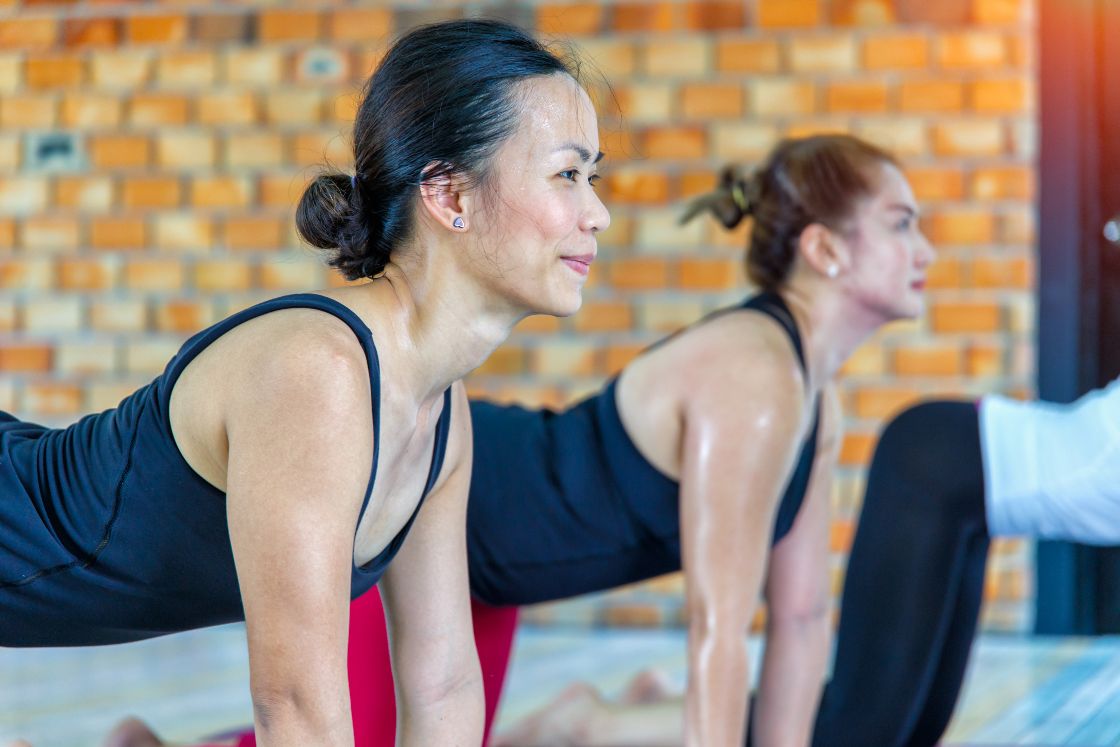
Image Source: Shutterstock
Both yoga practices have ‘heat‘ in common for which they considered a synonym to each other. But instead of temperature, there are a few key differences in their two sides of a coin relationship.
This quick lookup will clarify your confusion between Bikram and Hot yoga:
-
Bikram yoga is all about 26 selected poses..but not hot yoga
Bikram yoga has its own series of 26 selected asanas (Pose). Every class repeats the same sequence of series in this type of yoga style. On the other hand, hot yoga comprises traditional hatha yoga pose in a variety of ways.
So, in this way, in Bikram yoga, specific knowledge in the form of similar yoga poses series is served again & again.
-
The temperature: Bikram yoga is hotter than hot yoga
Bikram yoga is practiced under the 105 °F (41 °C), which is in itself more than the normal body temperature. After that, On the other hand, hot yoga classes have adjustable temperature studios. It varies from 80 and 100 °F. This flexible temperature is designed to remain flexible and comfortable, at the same time, practitioners really work up a sweat.
-
Bikram yoga designed for 90 minutes duration..not hot yoga
It’s the responsibility of Bikram yoga teacher to finish the class in 90 minutes, regardless of what’s a student’s pace of doing a pose. Continuous practice for 90 minutes without any break makes Bikram yoga intense enough.
Hot yoga classes have not a fixed duration to finish up a certain number of poses. Here classes are designed by the teacher in the form vinyasa (flow), according to student’s level.
-
Bikram yoga classes are more disciplinary than hot yoga
The environment matters a lot to achieve the optimum benefits of yoga practice. Bikram yoga usually follows a strict disciplinary approach in their yoga studios regarding their teachings. While hot yoga does not have any such rules or guideline which must be followed. Here, hot yoga is more flexible than Bikram.
-
Interaction
Due to the strictness, students are not allowed to interact with each other in ongoing classes. Also, teacher and student communication are underdeveloped. Instruction on the mike is to listen and followed. But in hot yoga, students are free to interact and can convey easily. Teachers and students also interact to clear doubts regarding the practice after the class.
Getting Started for Bikram Yoga Class? – Here’s Your Action Plan
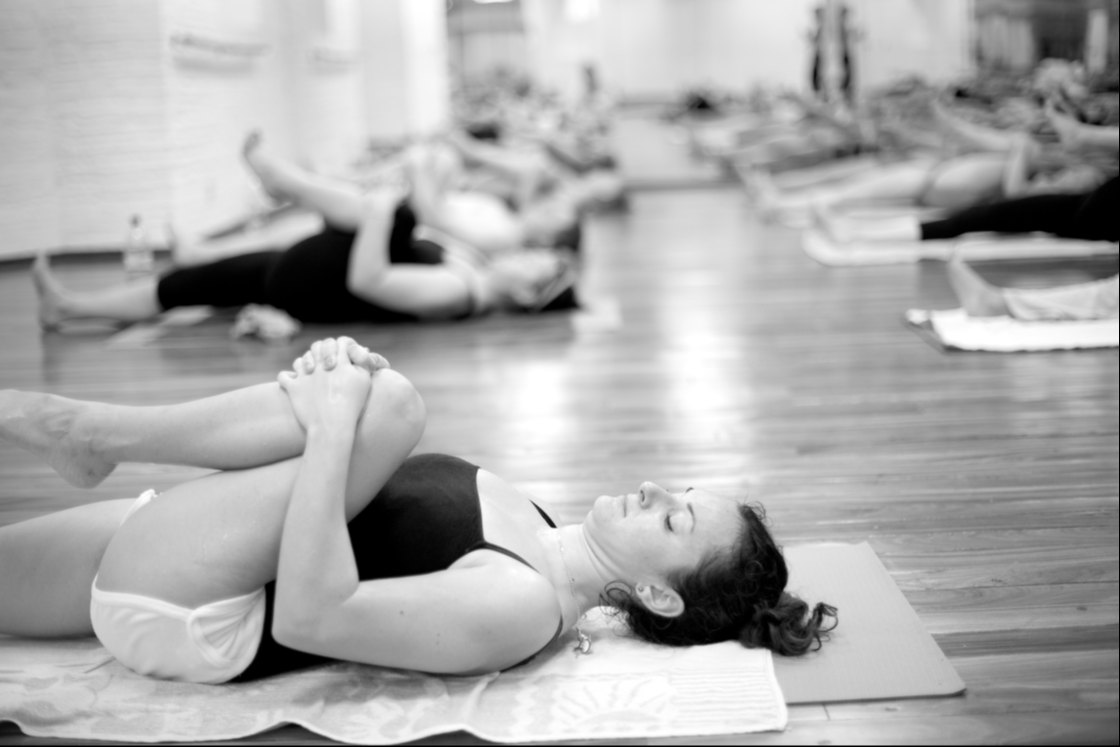
Spending an hour and a half into a room with a hot and humid condition is quite challenging in itself. Whoever is planning to head into that ‘torcher chamber’, must have a pre-decided schedule. However, Ignorance would only lead you to disappointment regarding your health. So, it’s better to prepare well than to expect.
Following are some of the tricks and tip that can save or resist your body from giving up:
1. Stay Hydrated
Bikram yoga classes have a temperature of 41 °C and exhaustive physical movements up to 90 minutes make practitioners sweating like a shower.
This reduced the water percentage of the body, which decrease the concentration, causes a headache, dizziness and various health-related problems. Therefore, Taking a lukewarm water bottle could be paramount benefits in a Bikram yoga class.
2. Wear Loose Clothes
Preference for clothes has a direct influence on your body posture so your physical health.
Temperature and humidity make you sweat but continue yoga posture of different range, expect you to be flexible & fluffy. So, wearing clothes that limits your movements discourage your yoga practice. Clothes that promote movements and absorb sweat could be a great choice for Bikram’s yoga session.
3. Empty Stomach
It is advised not to eat anything before 3 to 4 hours of Bikram yoga practice. Eating right or a few minutes before the practice could disrupt your yoga practice.
During the digestion of food, energy is required by the muscles and organs of the digestive system to withdraw nutrients. However, yoga practice after eating turns the blood flow towards engaging muscles and digestion remains deprived of the blood supply. Therefore, causing a major stomachache, acid reflux, pressure on internal organs, etc.
4. Shower After the Practice
Intense and exhaustive practice with such an environment raises body metabolism. However, this process diffuses harmful toxic materials out of the body, via sweating.
Yoga practice cleanses body internally and after that, it’s your job to clean it externally. Sweat is actually the mixture of the body’s unwanted substances, which is needed to be washed away. Therefore, having a shower after some time of the yoga practice, purify your body finally.
Benefits of Bikram Yoga

Although science has proved many benefits of yoga, Bikram yoga is especially known for its benefits to come from its vigorous style. Some of them are covering up in the below section.
1. Improves flexibility
Bikram yoga offers a temperature of 104 F or 41*C, which enhances the movability of joints and muscles. Regular practice provides permanent flexibility to the practitioner.
Performing yoga poses in such a heated atmosphere improved the flexibility of hamstring, shoulder and lower back, study proved [efn_note] Bikram yoga training and physical fitness in healthy young adults https://www.ncbi.nlm.nih.gov/pubmed/22592178 [/efn_note]. Therefore, temperature acts as a catalyst for improving flexibility.
2. Builds Strength & Tones Muscles
Poses of Bikram style series repeated over two times. However, every class has a focus on that pre-decided yoga poses. Regular and similar practice builds the influenced body part. Therefore, this provides new strength to muscles and carve in order to tone them up. Ultimately, it stabilizes the musculoskeletal system of the body.
3. Detoxify the Body
Bikram yoga studio’s atmosphere elevates the body temperature. Such a rise in temperature signals the body mechanism to sweat more and more. Sweating helps in the elimination of harmful or toxic materials out through the skin pores. Therefore, the Bikram style of yoga helps in the detoxification of the body.
According to research [efn_note] Arsenic, Cadmium, Lead, and Mercury in Sweat https://www.ncbi.nlm.nih.gov/pmc/articles/PMC3312275/ [/efn_note], harmful chemicals like arsenic, cadmium, lead, and mercury is ejected out of the body while sweating. Thus sweating has a great significance in detoxification of the body & so on our overall health.
4. Effective in Weight Loss
The combination of rigorous physical movements and 41 °C elevates the metabolism of the body. This makes the body burn more calories to fulfil energy demand. The overall process helps in weight reduction.
In support of this, research has found elevated temperature helps in weight loss [efn_note] ‘Hot’ yoga yields fitness benefits https://source.colostate.edu/researcher-hot-yoga-yields-fitness-benefits/ [/efn_note]. So, performing Bikram yoga could prove to be an effective cardio calories burner.
5. Helps Overcome Stress and Anxiety
Bikram yoga has an effective set of poses, which elevates the psychological wellness as well.
The strenuous physical activity performed during the class helps in the release of the chemical called endorphins. This surge of endorphins interacts with the brain’s receptors, which in turn triggers the positive feeling of wellbeing. Ultimately, helps in stress and anxiety management.
6. Strengthens the Respiratory System
Extreme conditions like temperature and 90 minutes period level up the body’s struggle. The active physical activity enhances the oxygen demand of the body, which is followed by an increase in breathing rate.
However, fast pace breathing increases the blood flow to the lungs, allows delivering more oxygen to the working muscles. So in this way, the Bikram yoga style improves the lung capacity and strengthens the respiratory system.
7. Promotes Cardiovascular Health
Bikram yoga offers a way to build cardiovascular muscle strength through its yoga series. Back to back yoga poses induces the heart muscles to pump the adequate amount of blood to the concerned set of muscles. This improves the functioning of the heart muscles.
According to one of the research on Bikram yoga [efn_note] Effect of a 16-week Bikram yoga program on heart rate https://www.ncbi.nlm.nih.gov/pmc/articles/PMC5399826/ [/efn_note], performing 26 poses in the duration of 90 minutes reduces the high-frequency power component of heart rate variability (HRV) and associated cardiovascular disease (CVD) risk factors.
However, it also improves the muscle’s ability to draw oxygen from the circulating blood in the capillaries. This reduces the heart’s effort of pumping harder at any age.
Some Risk Associated With Bikram Yoga
Bikram yoga has numerous health benefits but side by side there is a concern too if you do not become aware on time. Due to conditions applied to perform this yoga style, it comes up with some serious health issues.
Following are the points needs to be in mind before you begin to practice Bikram yoga:
- High internal and external body temperature due to strenuous yoga practice raises the chances of heat exhaustion [efn_note] Heat exhaustion https://www.mayoclinic.org/diseases-conditions/heat-exhaustion [/efn_note]. In this, body temperature and pulse rate increases more than the normal and results in nausea, muscle cramp, faintness, and dizziness, etc.
- Staying for 90 minutes in the hot room could result in water scarcity in your body. A sudden imbalance of water could impact the body’s metabolism badly and might result in heart palpitations, lightheadedness, and weakness, etc.
- Hot, humid condition and sweating creates a perfect trio for the microbial growth. Mats and towels used in between the classes, if not clean properly can spread harmful germs from person to person. This could cause various skin related problems ex. rashes, itching, etc.

